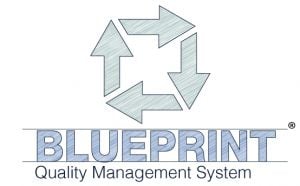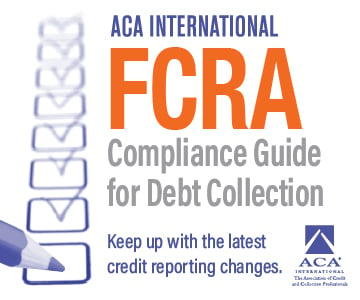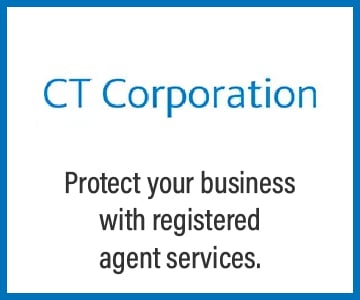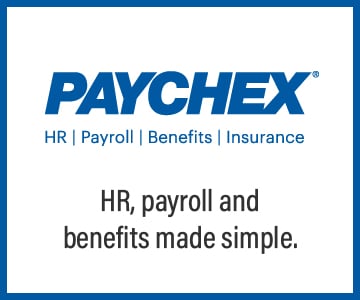Blueprint Quality Management System®
Write it.
Do it.
Check it.
Improve it.
Earn a Blueprint Quality Management System certification to form a foundation for RFPs, as well as licensing, regulators, and industry certifications. In addition, create efficiency and consistency for staff and clients, develop accountability to higher standards, and make continuous improvements across all practices.
What if your agency could:
- Cut down on the number of mistakes it makes?
- Increase communication among various departments?
- Handle client issues in a more efficient and professional manner?
- Achieve bottom-line improvement?
- Be recognized for adhering to an industry standard?
The ACA Blueprint Quality Management System can help your company achieve this and more. Scroll down to learn all about the Blueprint program.
Blueprint is the redesigned and modernized Professional Practices Management System (PPMS).

The Program
The program features 18 basic elements related to:
- Overall management of the business
- Ways to improve and support business activities
- Client confidence
The accounts receivable management (ARM) industry is not a one-size-fits-all industry. Blueprint comes with the flexibility to shape your agency’s procedures to produce more effective outcomes.
Get started with the ACA Foundational Training on Blueprint seminars, which are available face-to-face, online, and on-demand.
Blueprint Basic Elements
An overview of the Blueprint program and details on its 18 elements.
Reviewing vision, mission, goals and expectations.
What is it?
- Requires the documentation of executive management’s policy concerning: client satisfaction, continuous improvement, and prevention of negative impacts on the collection industry.
- Requires management to provide the resources to carry out its policy.
- Requires a periodic review of the management system to compare performance to management policy.
Why do it?
- To make sure that executive management provides vision and leadership.
- To place responsibility on executive management to: define the management system, implement the management system, and maintain the management system.
Example:
Executives review annual agency results
- Performance (Example: recovery percentages)
- Client referrals
- Etc.
Writing company policies, procedures, and work instructions.
What is it?
Requires a documented management program (i.e., Company Manual) that: implements the organization’s policies, plans, and objectives; and reflects key management practices.
Why do it?
- To make certain that an agency’s management practices are consistent (i.e., reproducible).
- To make certain that an agency’s management practices provide services that meet client needs.
- To provide a baseline to: measure performance against and improve against.
Example
Sample Professional Practices Manual
Determining company’s ability to meet each client’s needs and expectations.
What is it?
A formal comparison of client requirements against an agency’s ability to meet those requirements.
- Define client’s needs and expectations.
- Review client’s needs and expectations.
- Review regulatory requirements.
- Define communication protocol.
- Track amendments to agreements.
Why do it?
To make certain that an agency will be able to meet a client’s needs before placing accounts.
Examples
- Listing accounts under the wrong client number.
- Format of responsible party data received from client did not follow agreed-upon format (Health care account sent to agency without patient names).
Maintaining both electronic and paper documents—policies, procedures, work instructions—and removing obsolete information.
What is it?
Establishing control documents and data to ensure: (1) that they are current, (2) that they are accessible where needed, (3) that they are reviewed and revised as necessary, and (4) that obsolete documents are removed from places where they might be used.
Why do it?
To make sure that the documents and data an agency uses are current and available.
Example
Procedures to enter new accounts and cash process were updated, but someone in the agency used the old procedure (resulting in unhappy clients, irate debtors, and happy attorneys).
Managing the purchasing process—major products and services only.
What is it?
Establishment of controls over an agency’s purchasing process that have a direct effect on services.
Controls should focus on: (1) Defining precise purchasing requirements in P.O.s and contracts (e.g., define criteria upfront) and (2) Evaluating vendors who have an impact on your service offering (e.g., letter services, etc.).
Why do it?
- To make certain the service received from your vendors meets your requirements.
- To incorporate the vendor’s service into your process, which should satisfy your client’s requirements.
Example
Selecting “Phone Vendor” based solely on price: Agency selected a phone system on price; system and dialer went down (i.e., no incoming or outgoing calls); the vendor did not have the technical ability to service the system and took over two days to get the phone system working again.
Securing and controlling all data flowing into the office.
What is it?
- Requires establishment of controls concerning above subject data.
- Controls should include such things as: identification, storage, security, and maintenance.
Why do it?
To make sure your agency: protects privacy of clients and consumers, complies with regulations, prevents credit fraud, and ensures client satisfaction
Example
Privacy Issues (FDCPA): (1) Shredding vs. throwing records in the trash, and (2) Agency was sued for violating FDCPA when an attorney for a consumer pulled confidential records from the dumpster (i.e., found in plastic trash bags).
Understanding company information and where it belongs.
What is it?
A requirement regarding identification and traceability of incoming data, in-process data, and final data.
- Identification: The ability to distinguish one piece of data from another piece of data.
- Traceability: To be able to follow the data through the collection process.
- Concerns only data in control of the agency
Why do it?
To make certain that data is properly identified at all stages of your service in order to avoid errors.
Example
- Managing accounts: (1) Ability to tie data to your client, (2) Ability to document when an account moves to a new stage in the collection process, and (3) Ability to flag account status (e.g., do not call).
- Most collection software on the market will do the above.
Maintaining procedures or instructions for consistent performance—new business entry, cash application, collection call, etc.
What is it?
Requires that an agency: (1) Identify, plan, and control the steps to deliver the service, (2) Complies with industry standards, and (3) Monitors and controls work procedures and processes.
Why do it?
- To make sure all of an agency’s processes are carried out under controlled conditions to minimize variability in its services.
- To provide evidence that you are meeting client requirements.
- To boost client confidence.
Example
Collection Process: (1) Initial communication letter was sent, (2) Letter was not responded to by consumer, and (3) Before 30-day validation period expired, a demand payment request was made to pay immediately—a violation of the FDCPA.
Testing, reviewing, and verifying planned work processes—new business entry, cash application, collection call, etc.
What is it?
Requires that informal audit processes be in place to ensure that the service conforms to specified requirements for: Incoming service – new account listings, In-process service – collection cycle, and Finished service – cancellation or paid-in-full.
Why do it?
- To make sure that accounts are consistently handled.
- To ensure that services conform to all requirements at each service stage.
- To identify nonconforming products at the earliest possible stage.
- To facilitate corrective action.
Examples
- Duplicating work—entered new business twice because it is in the wrong pile.
- Setting your agency up on the system as a dummy account to see if you are getting the correct letter in a timely manner.
Verifying that company processes occur in sequence.
What is it?
This element focuses on the following: (1) That all required steps in the collection process take place and (2) That these steps take place in the proper sequence, where applicable.
Why do it?
- To make sure that only services that pass the required inspection and test are released to the next step. (Example: If the file is marked do not contact, you do not want anyone from the agency to contact the responsible party.)
- Client satisfaction.
Examples
- FDCPA: Do not demand payment in a timeframe shorter than the 30-day validation period.
- Consumer’s attorney sends official notice: “do not contact the debtor.”
Identifying and recording mistakes or problems.
What is it?
Requirement that an agency will: (1) Identify nonconforming services, (2) Evaluate the degree and extent of the nonconformance, and (3) Contain nonconformity to prevent further problems.
Why do it?
To make sure that an agency identifies nonconforming services in order to: (1) Prevent further damage, (2) Improve service, and (3) Satisfy clients.
Examples
- Client requirements not followed.
- Legal requirements not followed.
- Internal agency procedures not followed.
Correcting and preventing problems by finding a better, faster, or more reliable way to accomplish work.
What is it?
- Investigation and elimination of root causes of nonconforming activities at any point in an agency’s service.
- Testing or proving the adequacy of procedures/processes to prevent occurrence of nonconforming services in the first place.
- Reengineering processes to improve services and reduce cost.
Why do it?
- To make certain that causes of nonconforming services are investigated and a good-faith effort is made to eliminate them.
- Elimination of potential causes of nonconforming services before they occur.
- To continuously improve services.
Example
Corrective Action: Root Cause Analysis
- Client Complaint: Agency was taking three months to forward out-of-state accounts.
- Reason: Forwarding was done manually.
- Corrective/Preventive Action: Process is being computerized.
Disaster planning and delivery of information.
What is it?
- Extension of Element 6: Control of Client & Customer Supplied Data.
- Extension of Element 8: Process Control.
- Covers issues concerning the integrity of an agency’s business: (1) Disaster Planning, (2) Tracking of Money, (3) Daily Cash Journals, and (4) Formats of Client Reports.
Why do it?
- To protect the integrity of service at all stages.
- Make sure to care for client-provided data: (1) How is data handled? (2) How is data stored? (3) How is data preserved? and (4) How is data delivered?
Example
Disaster Recovery Plan
- General Manager: Responsible for all oversight of recovery activities.
- MIS Supervisor: Determine if company’s computer equipment is operational and can be moved to a new work location. Arrange for rental equipment if computer equipment is not operational. Recover backup tapes from off-site storage area.
- Collection Supervisor: If the disaster requires work operations to be moved to another location, contact telecommunications vendors and arrange for a temporary service at the new location. Recover hardcopy files (i.e., client and responsible party information) from off-site storage area.
Handling, storing, retrieving, and depositing of information.
What is it?
- Effective control and management of records and data.
- It includes: Archiving records; identification and indexing records; retrieving stored records (e.g., one business day); storing records effectively (e.g., preventing deterioration); proper disposal of records (e.g., privacy considerations) and establishing record retention time.
Why do it?
- To make certain that agency records are available.
- To demonstrate effective operation of the management system (all steps performed).
- To provide evidence of the achievement of required service quality.
- To use records to help an agency’s service to improve.
- To define how long records are kept.
Examples
- Record Storage: IRS Records (e.g., keep seven years) and Complaints (e.g., dispose after one year)
- Destroying of Records and Data: Shredding, Burn Bag, and Trash.
- Policies on What Data and Records to Keep and What to Throw Away.
Ensuring procedures and policies are followed and the management system is working by having all departments inspected on a regular basis.
What is it?
- A planned process for conducting internal audits of your management system.
- It includes: (1) Planning and scheduling audits according to status and importance of activity, (2) Carrying out audits using independent personnel, (3) Documenting audit results and any follow-up activity, (4) Communicating audit results to appropriate personnel, including management, (5) Initiating corrective action, and (5) Verifying and recording effectiveness of corrective action taken.
Why do it?
- To check that your management processes are performing to requirements (i.e., client, internal and regulatory requirements).
- To demonstrate the effectiveness of your management practices.
Example
Internal Audit Checklist
Continuous training of all staff.
What is it?
- A training process that is based on an agency’s job requirements
- It requires: (1) Evaluation of training needs to satisfy job requirements (education, knowledge, skills), (2) Development of a training plan, (3) Training of personnel to meet training needs and (4) Keeping records of individual qualifications.
Why do it?
To make certain that employees are trained to do their jobs effectively so they will avoid mistakes that affect the quality of an agency’s service.
Example
- FDCPA Training
- FCRA Training
- Telephone Collection Techniques
- Skiptracing Training
- HIPAA Training
Measuring results internally and externally.
What is it?
- Identification of measurements to prove that your service is working properly (effectiveness = quality).
- These measurements should support the following: (1) That an agency is conforming to Internal Requirements, (2) That an agency is conforming to Client Requirements, and (3) That an agency is conforming to Regulatory Requirements.
- Identification of measurements to help your agency improve (efficiency = profits).
Why do it?
- To provide confidence that an agency’s processes are performing to requirements.
- To provide targets for improvement.
Example
Improvement Targets: Example Plan
Security of information systems.
Blueprint Requirements:
- Data and IT are secured
- User account administration is being monitored
Blueprint Certification
To be certified, agencies must demonstrate they have implemented the Blueprint Quality Management System. Certification requires that the agency have an independent CPA visit their office, attest to the required information, and send it to an independent third-party auditor (determined by ACA) for review. If the information meets the requirements, certification will be granted.
Requirements:
- Create and maintain a documented professional practices manual. This manual will be used for third-party accounts receivables.
Compliance Check – Annually submit a copy of the title page and table of contents of the Manual along with a signed statement that the content complies with the ACA’s PPMS™. The Manual should follow the numbering system (i.e. element numbers). - Annual executive management review of Blueprint. Continuous improvements to be pursued in the next 12 months. Review results of internal audits and nonconformances. Review industry, customer, and code of ethics requirements.
Compliance Check – Annually submit signed copies of the following: (1) Signed copy of the continuous improvement program. (2) Signed copy of NCN trends by element. (3) Signed copy that the industry and code of ethics review has taken place.
- Develop a continuous improvement program. The program should be based on: (1) Analysis of customer satisfaction, including customer feedback information, (2) Trends from nonconformances notes (NCNs), (3) Internal audit feedback, and (4) New industry requirements.
Compliance Check – Annually submit a signed list of continuous improvements that are planned for the following 12 months.
- Develop an internal auditing program. All elements of Blueprint will be audited at least once a year.
Compliance Check – Annually submit signed copy of ACA audit checklist.
- Create a corrective action program. (1) Set up a system to effectively handle complaints and nonconformances (i.e., customer and consumer); (2) Investigate the causes of complaints and nonconformances (NCNs); (3) Determine corrective action needed to eliminate the cause of complaints and NCNs; (4) Apply controls to ensure corrective action is implemented and effective.
Compliance Check – Annually submit signed copy of the non–conformance and complaint log (i.e., the log need not be traceable to trends or need not identify the actual complaint or NCN by description).
- Training. Identify training needs and provide for the training of all personnel performing activities affecting delivery of services.
Compliance Check – Prior to certification – Attendance at ACA’s foundational training program for agencies (i.e., one person must attend prior to certification). Annually submit a signed copy of training log.
Blueprint Fees:
Fees are based on agency size and number of locations. Base prices are listed below. Contact ACA for nonmember rates.)
- Initial Certification Fee (Year 1): $1,839. Includes $299 required seminar registration fee for training seminar. (Does not include fee for separate compliance seminar and does not include local CPA fees or internal costs incurred by the agency.)
- Surveillance Fees (Year 2, 3, and 4): $770. (Does not include internal costs incurred by the agency.)
- Recertification Fees (Year 5): $1,540. (Does not include local CPA fees or internal costs incurred by the agency.)
General FAQs
The Foundational Training on Blueprint seminar is a one-day face-to-face training session or a three-day (two hours each day) online training session. Attendance by at least one agency representative is required before an agency can begin the Blueprint certification process through ACA International. This training seminar provides agencies with the fundamental tools, samples, and knowledge needed to develop a customized Blueprint to fit an agency’s unique business needs.
During the seminar, the instructors introduce attendees to the Blueprint program, outline the elements of Blueprint, and detail the processes and documentation necessary for an agency to develop its own Blueprint. In addition, attendees will be required to attend a 1 1/2-hour online seminar regarding compliance issues in areas such as the Fair Debt Collection Practices Act (FDCPA), Fair Credit Reporting Act (FCRA) and other industry regulations.
In addition to a thorough review of each of the 18 Blueprint elements, the seminar instructors teach attendees about creating the various types of documentation necessary to support the elements, including: Company Manuals, Company Procedures, and Work Instructions.
Developing and documenting a Blueprint is the core of the ACA International Agency Certification program. The complexity and amount of documentation required for Blueprint will vary by each individual agency’s size, services, and resources. While each agency’s Blueprint will be unique according to its needs, by following the overall guidelines of the program the agency will demonstrate a commitment to quality assurance and client satisfaction that is the foundation of the ACA agency certification.
Although having a Blueprint certification is a necessary requirement to receive agency certification through ACA International, there are many other advantages as well. The process of developing a Blueprint Quality Management System helps an agency thoroughly explore its processes and procedures and improve its overall efficiency and professionalism.
An agency that implements the Blueprint program will be implementing a management system focusing on the following:
Standardizing how an agency is managed and run. One way to remove waste (mistakes, rework, poor service) is to standardize processes so all employees understand their jobs and how their work fits into the system. Standardization increases efficiency—you do not have to reinvent the wheel every time you take on a new client. Standardization will also help you decide when you can charge a client more for an “extra” service that is outside your standard practices.
The Blueprint Quality Management System requires an agency to pursue continuous improvement. No matter how well your agency runs, there is always room for improvement. Blueprint recommends that continuous improvement be tied to the management review process and client satisfaction measurements. In other words, continuous improvement should tie back to process improvement (saving money or developing new profitable services) and/or client satisfaction.
Implementation
The standards you are talking about fit very nicely under either Element one or Element 17. Element one says you have a plan, goals, etc. (standards) and Element 17 says you are measuring against those goals (standards) that have been set. What you can also do is add your standards as a separate section in the front of your company manual if you don’t feel it fits in any other area.
You need to do one project per year as the minimum requirement.
Anything that improves the business. For instance, evaluating a new skiptracing tool or developing a better legal process.
You need to prove that you are providing continuous training to your staff by the training checklist. If you have 100 employees and only two people have had any training over the last year, I would say that is not proving you are providing continuous training to your staff. There is no magic number to pass or fail—it is showing and demonstrating you are doing continuous training.
One way for an IT team to buy into Blueprint is by creating a separate form for them that gets tied to client issues or nonconformities related to IT requests. This allows the company to separate out true IT issues from nonconformities or client issues. Sometimes a client issue will drive an IT request. For example: A client changes their format on the new business file. IT needs to reprogram for the new file format. A client issue would be written and then an IT request to change the program. The client issue is followed up on by client services to ensure the client is satisfied with the changes and IT handles Blueprint in their world.
Certification
This could be any sort of industry training. If someone from your company has attended any sort of ACA seminar or another industry meeting, it would qualify.
You have to have at least one procedure for each of the 17 elements and you have to have a documented policy under Element One. But other than that, you can continuously update your manual.
It takes approximately two weeks.
The trend analysis is done for the entire year, meaning the first six months and then the last six months of the year. If your company chooses to do two audits instead of one for the year, that is your choice, but I am not sure you can tie the audit to a continuous improvement process. You need a minimum of one continuous improvement project a year, which is very easy to do since we all have many going on at the same time.
Documentation
Work instructions are not required for certification.
Yes, and policies are not required except for Element One: Your management policy.
It is not a requirement for certification to include your employee handbook in your company manual. It is up to your company to determine what best suits your needs.
Blueprint Resources for Certified Agencies
Access your Blueprint Quality Management System® resources here. We’ve added key marketing material and logos for your clients and employees. This information will save you time and allow for easier implementation.
Marketing Guide
The Blueprint Playbook: Messaging Potential Clients provides tips and tools to help you promote your certification to your clients and potential clients.
PowerPoint Presentation:
Code of Ethics:
Certified Company Logos:
- EPS files
- TIF files
- JPG files
Website Logos:




